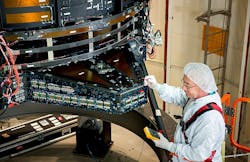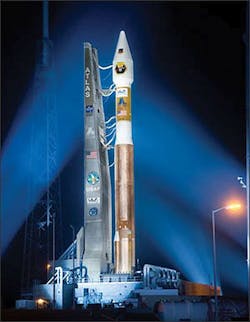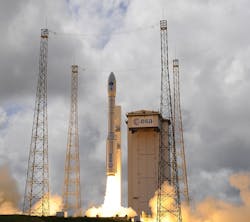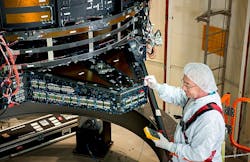Standardization of COTS components in space
The term "standardization" is well known and practiced for military and space components. It does not mean, however, that everyone is happy with compliance requirement policies, especially as they endeavor to use standard components to the maximum possible extent. The main resistance to adopting standards is rooted in the individual designer’s will not to have factors restrict his or her creativity.
The use of more and more commercial off-the-shelf (COTS) components is and will continue to be the way to go for space applications. The large variety of COTS components in the commercial market emphasizes the need for standardization of the use of "space COTS."
Standardization is the way to survive the transition to the use of COTS in space applications. For some faithful followers of the exclusive use of space and military components in space, the COTS market is a jungle to be avoided, and not a chance to survive.
Standardization
Standardization reduces the number of components types used in different designs. This policy can be implemented at different levels, depending on the specific designs/products that have similar requirements.
The levels are: international, national, corporate, plant, and project. The goal is to reach component commonality in designs/products and to benefit from this process.
The benefits of standardization include, but are not limited to:
- Introduction of a disciplined, controlled culture
- Optimum use of scarce resources (engineering manpower, infrastructure, etc.)
- Overall components cost of ownership reduction (higher-volume procurement, less orders, less non-recurring engineering/NRE) Remark: Cost of ownership usually is less for "use as is" military parts than for up-screened COTS components. Reducing NRE, by COTS types reduction, results in substantial savings.
- Long-term cost reduction by replacing duplicate research-and-development efforts on functionally similar components with a single development effort
- Cost reduction in manufacturing and procurement
- Better knowledge of the standardized component Remark: It is better to know a lot about a few parts than little about many.
- Significant benefit for components needing specific development software resources (e.g., microprocessors, field-programmable gate arrays/FPGAs, etc.).
As is always the case, in addition to advantages, there are disadvantages associated with the practice of standardization. Yet, the advantages greatly outweigh the disadvantages.
Compared to the already multi-year practiced space/military standardization, most if not all of the disadvantages are identical.
It seems that the main concern is of an individual nature: The designer would like to have full freedom for creativity. Especially in the huge COTS market, such a freedom guarantee may lead to unmanageable chaos, which is not economically affordable. Fortunately, the frustrated designers limited to old space/military technology components (rightly envious of the commercial world unrestricted designers) will get more freedom to create with standard, more advanced COTS components.
In transitioning to the use of COTS in space, the disadvantage may partially become an advantage to attract better designers to the space industry and prevent frustrated designers from leaving.
Standardization implementation
Standardization is culture. Consequently, the relevant management must decide to back standardization. This leads to culture change and resistance to change.
The standardization is usually performed within a standardization committee, led by component engineering. Committee members are representatives of the different involved disciplines from the intended users (design, manufacture, procurement).
The main technical work is done by components engineering, being experts in the subject field. he output is a standard to be used by all designers. The idea is to save the designers the need to search and research components for their design.
The committee may adopt existing standards in part or entirety. Unfortunately, in contrast to the space/military field, standardization in the COTS in space field has not yet been developed – i.e., standards specifying component number/relevant manufacturer approved for selection.
Component selection is a very complex process, especially for COTS. Among other things, the main involved parameters dealt with are:
- Component functionality versus several design needs
Remark: Component performance meeting the maximum expected designs takes precedence over an eventual functional "overkill."
- Component environmental specification versus several design needs
Remark: For space applications, higher than needed component radiation withstanding capability may substantially rise the NRE cost and unnecessarily put an extra burden on the component selection. For example: High-radiation-resistant components are over-qualified for low Earth orbit (LEO) missions. Consequently, orbit-oriented standards may be considered. A quote states: "To an engineer, good enough means perfect."
- Component package (type, finishes, pitch) compliance with the specific manufacturing process (PCB, soldering, inspection etc.)
- Technology maturity
- Component availability status and projection
- Manufacturer reputation and Quality Assurance Plan
- Component cost (RE) and cost of ownership (NRE)
- Component heritage
- Component problem history
- Required Minimum Order Quantity (MOQ)
Standardization benefits across the plant
Standardization of electrical, electronic, and electromechanical (EEE) components has a positive impact across a plant dealing with a variety of projects. Among them are:
- Engineering: see above the importance of used components types reduction.
- Printed circuit board (PCB) layout design: Components types reduction also reduces the amount of creating models used for layout design, resulting in cost reduction.
- Manufacturing: Receiving components checked in advance for compliance with the practiced processes prevents unexpected, negative, expensive events. Setting up different production stations takes expensive time.
Component types reduction may save setup and/or processing time. For example: Feeders attached to the reflow machine have a capability of handling simultaneously maximum X types/values of components. The standardization helps to keep the component variety below the given maximum, saving additional rounds of feeding. This results in time saving and a better use of existing manufacturing capability.
- Procurement: Standardization results in less orders, less paperwork, less suppliers to deal with, and higher procurement volumes, leading to lower prices.
- Project Management: Standardization results in shortening of lead times, in cost saving. It must be remembered that the EEE components are always a critical path for any project. It is very difficult (at least for me) to see how future space projects will be managed without using standardized COTS components.
COTS obsolescence Another argument of not using COTS is frequent obsolescence. This is not a valid statement for all COTS. An educated selection process may mitigate existing negative phenomena. Some people who oppose COTS may forget that the beloved space/military components world also was, is, and will be hit by obsolescence. Nevertheless, in the space/military components domain the term "discontinued" sounds better than the term "obsolete"! From the point of view of the space/military methodology (using only space/military components), there was massive obsolescence, critically affecting availability.
In my experience, standardization proves useful in fighting obsolescence of a selected component. The deep knowledge of a standardized component, following the work of the best available experts, usually results in lowering the probability of the selected component becoming obsolete in a short period. Remark: In conjunction with a wise procurement strategy and an educated component selection, the obsolescence problem is less severe in an unmaintainable space application. This does not mean pay less attention to this issue.
Conclusion
Both the use and standardization of COTS components in space applications are imminent. Resistance to change only delays the change.
Any move toward standardization is a move in the right direction.
“Two basic rules of life are: 1) Change is inevitable. 2) Everybody resists change.” ~ W. Edwards Deming
About the author
Dan Friedlander graduated engineering school (Tel Aviv University, 1965-1969) with a degree in physics. He has 44 years of experience in component engineering at MBT/Israeli Aerospace Industries (1969-2013).
As head of components engineering, he was responsible for all aspects of EEE components (policymaking, standardization at corporate level, approval, etc.) for military and space applications. He retired and started a consultancy in 2013.
For more details about his experience, visit https://www.linkedin.com/in/dan-friedlander-63620092?trk=nav_responsive_tab_profile
Search the Aerospace & Defense Buyer's Guide
The go-to resource for Intelligent Aerospace technology news & information:
Covering key topics
Across all market segments
Subscribe to the free Intelligent Inbox e-newsletter
Subscribe to receive all the latest aerospace technology news & information, delivered directly to your e-mail inbox twice a week (Tuesdays and Thursdays). Sign upfor your free subscription to the Intelligent Inbox e-newsletter at http://www.intelligent-aerospace.com/subscribe.html.
Connect on social media
Keep pace with aerospace innovation and opportunities via your favorite social media channels. Connect with Intelligent Aerospace on Twitter (@IntelligentAero), LinkedIn,Google+, and Instagram.





